Near the Sea of Galilee, Mount Arbel's silent history offers untold biblical insights, beckoning the curious to uncover its hidden spiritual significance.
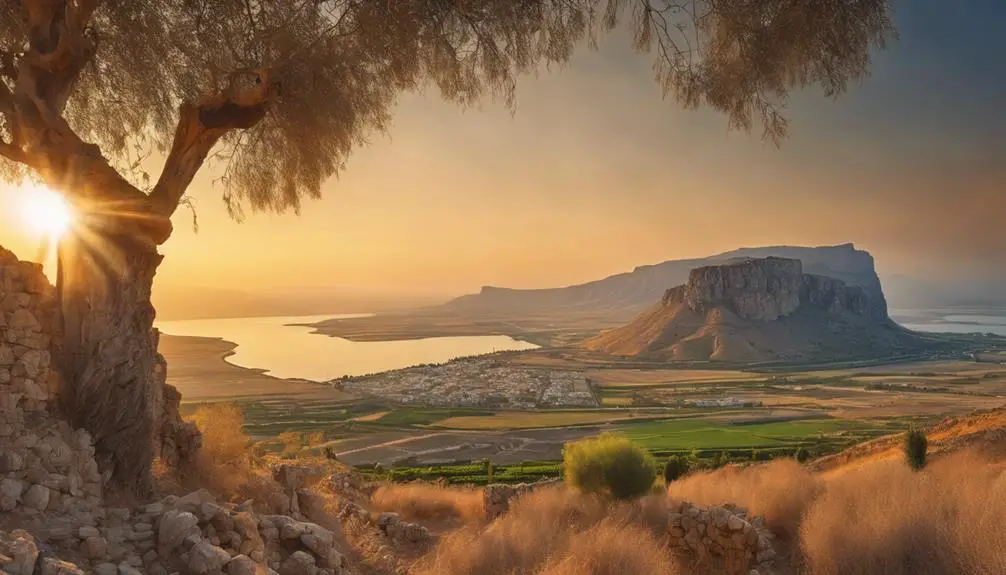
Mount Arbel in the Bible
If you were to pull up Google Maps in ancient times, you wouldn't find Mount Arbel listed under 'Biblical landmarks,' yet its silent presence near the Sea of Galilee whispers tales of historical and spiritual significance.
This mountain may not headline in biblical narratives, but its proximity to key events offers a backdrop that sparks curiosity. From its rugged cliffs to the mysteries it harbors beneath, Mount Arbel holds archaeological and spiritual treasures yet to be fully uncovered.
As you explore this lesser-known site, consider the untold stories it might reveal about the world during biblical times. Why should this mountain matter to someone interested in the intersection of geography, history, and faith?
Key Takeaways
- Arbel's proximity to biblical sites offers insights into the context of scripture.
- Understanding Arbel's location enriches interpretations of ancient texts.
- Arbel's role in historical events deepens spiritual connections to biblical narratives.
- Reflecting on Arbel's biblical significance aids in exploring personal faith journeys.
Historical Significance
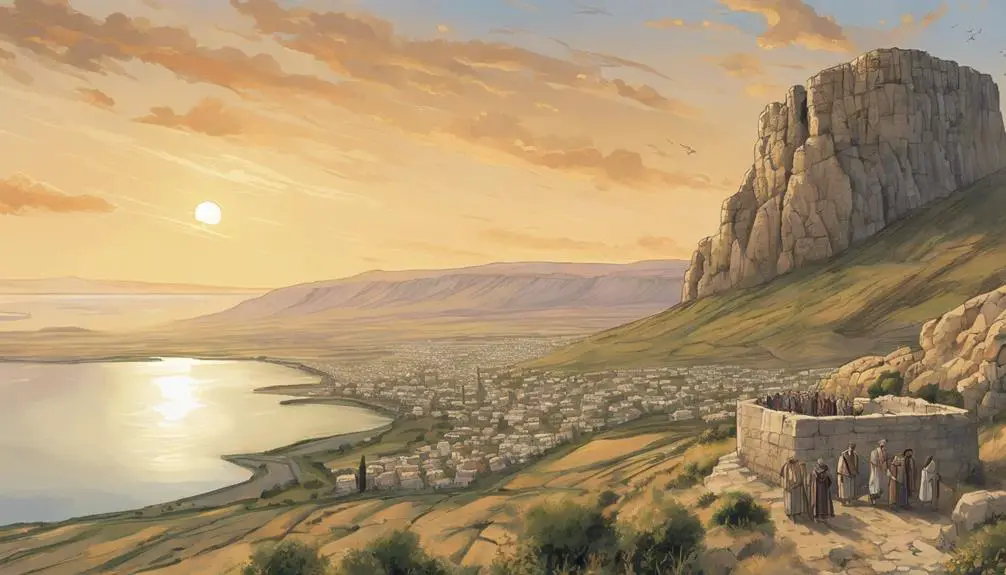
Mount Arbel holds a pivotal place in history, serving as a silent witness to numerous pivotal events and transitions that have shaped the cultural and religious landscape of the region. Its strategic location overlooking ancient routes made it a critical military stronghold throughout the ages. You can't overlook the significance of Arbel when you're delving into the history of military tactics and control mechanisms employed in the ancient Near East. Its towering presence wasn't just a natural marvel but also a formidable barrier and a vantage point for surveillance and defense against invading forces.
The significance of Mount Arbel extends beyond its immediate geographical and military implications. It played a crucial role in the control and security of the surrounding areas, given its oversight of key ancient routes. These routes were vital for trade, military campaigns, and cultural exchange, making Arbel a focal point for various powers vying for control over the region. The mountain's fortifications and its ability to serve as a lookout post made it an invaluable asset for any ruling power. As you analyze Arbel's historical role, it's clear that its impact on regional dynamics was profound, influencing the course of history in ways that resonate to this day.
Biblical Proximity
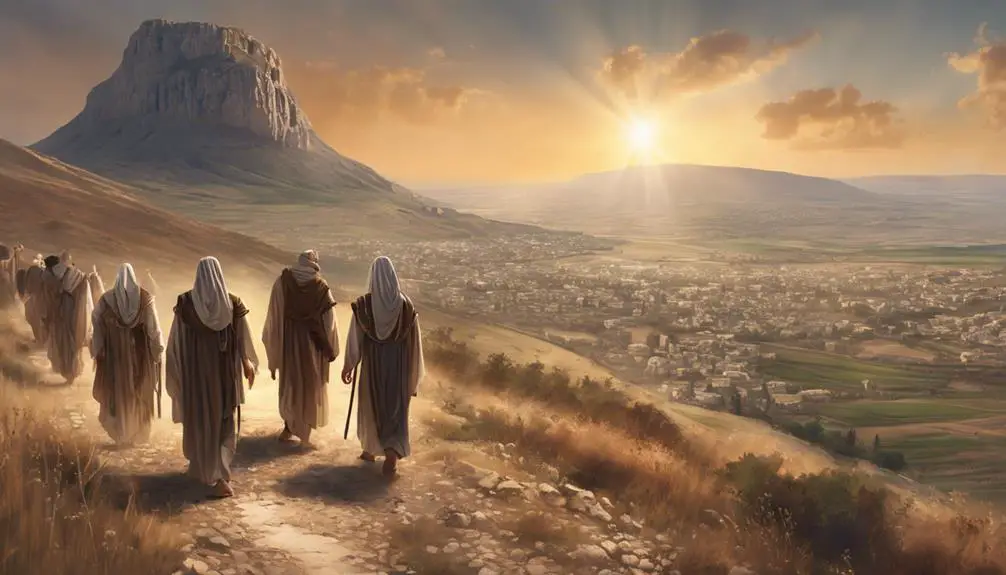
Nestled within the rich tapestry of biblical history, Arbel's proximity to significant biblical events offers a unique lens through which to view the narratives of ancient scriptures. This closeness not only enriches our understanding of these events but also influences modern interpretations and affects travel logistics for those wishing to explore these historical sites.
When considering Arbel's significance in biblical proximity, several key points emerge:
- Strategic Location: Arbel sits near pivotal biblical sites, making it an essential reference point for scholars and enthusiasts aiming to contextualize scripture within its geographical setting.
- Influence on Narratives: Its proximity to areas of notable biblical activity offers insights into the daily lives of historical figures, potentially shaping their actions and experiences as chronicled in the scriptures.
- Modern Interpretations: Understanding Arbel's location relative to biblical events aids in contemporary analyses, allowing a deeper exploration of ancient texts through the lens of geographical and historical accuracy.
- Travel Logistics: For modern explorers, knowledge of Arbel's biblical proximity simplifies navigation, enriching the pilgrimage experience by connecting travelers more closely with the landscapes of the Bible.
Through these lenses, Arbel's geographical closeness to biblical events not only deepens historical understanding but also enhances the spiritual journey of those who walk in the footsteps of ancient figures.
Geographical Context
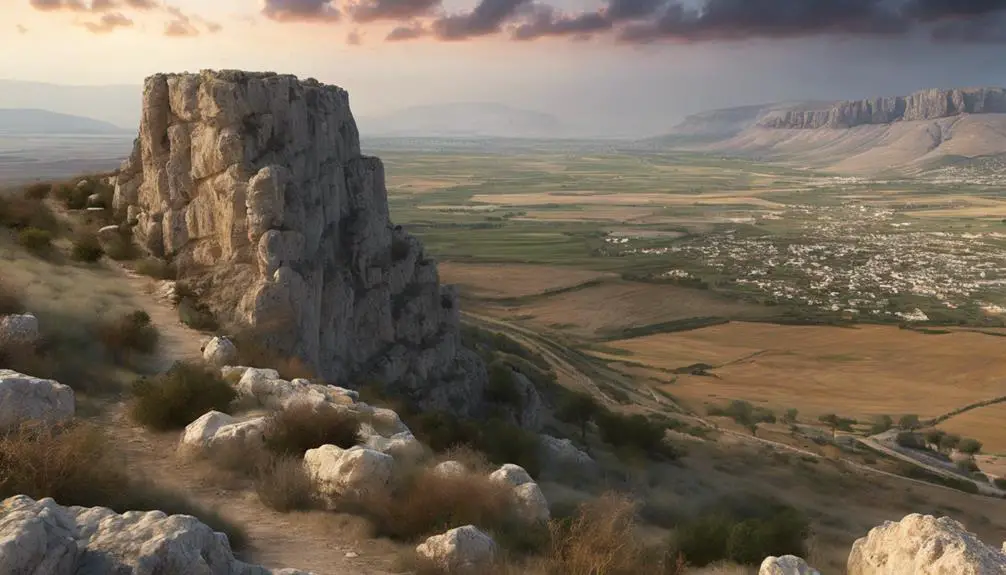
Exploring the geographical context of Arbel further enriches our understanding of its role within biblical narratives and its impact on historical and contemporary experiences. Nestled in the Lower Galilee near the Sea of Galilee, Mount Arbel stands as a prominent feature due to its striking rock formations and the diverse flora it supports. These rock formations, comprising primarily of limestone and dolomite, haven't only created a dramatic landscape but also served as natural fortifications throughout history. The cliffs and caves formed by erosion and tectonic activity have been pivotal in historical events, providing refuge and strategic vantage points.
The flora diversity on Mount Arbel is equally noteworthy. The mountain's range of microclimates, from its windy peaks to its sheltered valleys, supports a variety of plant life. This botanical diversity includes both endemic species and those common to the Mediterranean basin, creating a rich tapestry of vegetation that has sustained human and animal populations for millennia. This natural bounty would have been well known to the inhabitants of the region, influencing their daily lives and potentially even their spiritual practices. Thus, understanding the geographical context of Arbel provides insight into its multifaceted role in the region's history and ecology.
Archaeological Discoveries
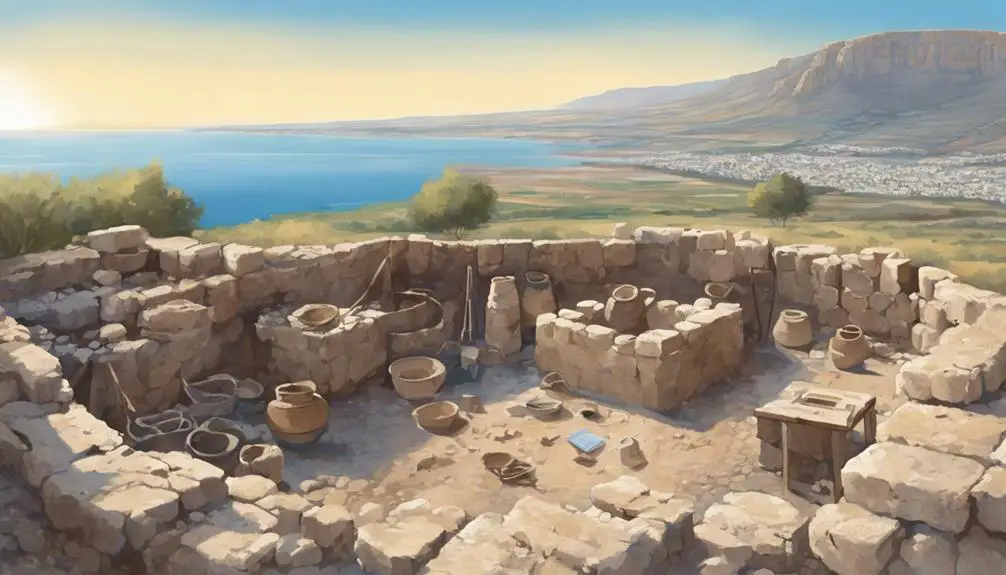
Several archaeological discoveries on Arbel have uncovered artifacts that illuminate the mountain's historical significance and its inhabitants' way of life. These finds offer a rare glimpse into the past, yet they also present unique challenges for archaeologists. Excavation challenges and artifact preservation are central concerns that professionals face when uncovering history layer by layer.
The challenges encountered during excavations on Mount Arbel include:
- Harsh Weather Conditions: The mountain's climate can be unpredictable, posing risks to both archaeologists and the artifacts they aim to preserve.
- Difficult Terrain: Arbel's rugged landscape makes access to certain areas difficult, complicating excavation efforts and the transportation of materials.
- Preservation of Delicate Artifacts: Once unearthed, artifacts must be meticulously handled and conserved to prevent deterioration.
- Documentation and Analysis: Each artifact requires detailed documentation and analysis, a time-consuming process essential for understanding their historical context.
These challenges underscore the complexity of archaeological work, highlighting the dedication required to bring the past to light. Through careful excavation and preservation efforts, archaeologists continue to unveil the rich history of Mount Arbel, offering insights into the lives of its ancient inhabitants.
Spiritual Reflections

Mount Arbel's significance extends beyond its archaeological wonders, serving as a profound source of spiritual reflection for many who journey there. Its towering presence and historical depth invite you into a personal journey of faith exploration, where the physical climb mirrors the metaphorical ascent one embarks upon in seeking greater spiritual understanding. This landscape, steeped in biblical narratives, offers you a unique lens through which to view your own faith journey. As you traverse its paths, you're encouraged to reflect upon the resilience and perseverance embodied by historical figures associated with this region.
Analyzing Mount Arbel's role in biblical stories, you uncover layers of faith, struggle, and revelation that have unfolded over millennia. This process invites a scholarly examination of how physical spaces influence spiritual experiences. For instance, the panoramic views from the summit offer a moment of introspection, challenging you to consider the broad vistas of your own faith exploration. Here, the act of looking outward prompts a deeper inward exploration, encouraging a connection between the tangible and intangible aspects of your spiritual journey.
In essence, Mount Arbel acts as a catalyst for a detailed, analytical, and deeply personal exploration of faith, bridging the gap between historical context and contemporary spiritual inquiry.
Frequently Asked Questions
How Challenging Is the Hike to the Top of Mount Arbel for Beginners, and What Specific Preparations Should They Consider?
Hiking to the top of Mount Arbel can be moderately challenging for beginners. You'll need proper hiking gear, including sturdy shoes and a hydration pack. Familiarize yourself with the trail's layout beforehand and start your hike early to avoid the midday heat.
Trail snacks are essential for maintaining energy. Pay attention to weather conditions and adjust your preparations accordingly. With these considerations, beginners can enjoy a safe and rewarding ascent.
Are There Any Specific Flora or Fauna Unique to the Mount Arbel Region That Visitors Should Look Out for During Their Visit?
When you visit Mount Arbel, you'll discover a rich tapestry of plant biodiversity and unique animal habitats. Keep your eyes peeled for endemic species that thrive in this distinct ecosystem.
It's crucial to research the specific flora and fauna native to the area before your trip. Understanding the ecological significance of Mount Arbel enhances your appreciation and helps ensure you don't miss observing rare species in their natural surroundings.
What Are the Best Times of Year to Visit Mount Arbel for Optimal Weather Conditions and Visitor Experience?
To optimize your visit to Mount Arbel, considering weather and overall experience, aim for spring or autumn. These seasons offer pleasant temperatures and reduced crowds, enhancing your exploration of its historical significance and nearby attractions.
Spring brings vibrant wildflowers, adding to the site's natural beauty, while autumn provides clear views. Both periods allow for a deeper, more comfortable engagement with the area's rich history and surrounding landscapes.
Can Visitors Participate in Any Local Cultural or Religious Events When Visiting Mount Arbel, and What Might Some of Those Events Entail?
Yes, you can participate in local cultural or religious events when visiting Mount Arbel. These events often include cultural workshops, where you'll dive deep into the traditions and crafts of the area, offering a hands-on experience.
Religious tours are also available, providing detailed insights into the historical and spiritual significance of the region. You'll gain a richer understanding of the local heritage, making your visit both enlightening and memorable.
Are There Any Modern Accommodations or Facilities Nearby Mount Arbel for Visitors Who Wish to Stay Overnight or Require Amenities During Their Visit?
Absolutely, you'll find modern accommodations near Mount Arbel that cater to your needs, blending historical significance with comfort. Whether you're looking for a cozy inn or a full-service hotel, options are available to ensure a pleasant stay.
Besides, the proximity to nearby attractions enhances your visit, allowing you to explore the area's rich cultural landscape. Facilities range from basic to luxurious, ensuring you find something that fits your preferences and budget.
Conclusion
In sum, Mount Arbel stands as a beacon of historical and spiritual significance, closely intertwined with biblical narratives. Its geographical context, nestled in the Galilean landscape, offers a unique vantage point on ancient Israel's terrain.
Archaeological findings further enrich our understanding of its historical milieu, shedding light on the lives of those who traversed its paths. Engaging with Mount Arbel, you're invited into a reflective journey through time, where history and spirituality converge, offering profound insights into the biblical era.



Sign up